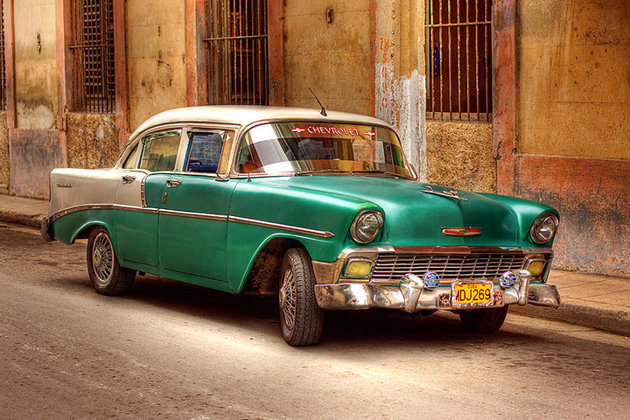The recently improved prospect of normalization of relations between the U.S. and Cuba has the potential for many different ramifications across a broad range of cultural and financial issues for both Cubans and Americans. For classic auto enthusiasts however, it is the legend of a large number of vintage American vehicles in Cuba that stirs the most interest. Unfortunately, the dream of bringing a pristine Chevy Bel Air back to the U.S. from Cuba is far more of a myth than it is a reality.
Although there are still a lot of U.S. cars in Cuba today (some have estimated as many as 50,000 pre-60s U.S. cars are on the island), it is highly unlikely that many of those cars will be worth bringing back to the U.S. for restoration purposes. That’s because it has been nearly impossible to get any parts (new or used) for those cars since the 1959 Cuban Revolution and resultant U.S. embargo. Lacking a source of replacement parts for over 50 years, old American cars in Cuba should be considered mechanical marvels if they run at all.
The high demand for parts along with old fashioned mechanical ingenuity has forced many Cubans to keep their vehicles running any way they could. This meant they often had to build their own parts or repurpose parts from other machines and the results of those experiments have become quite creative over the years. Under the hood of what appears to be a classic car in Cuba today, it is not unusual to find a mix of rusting handmade parts, repurposed household items and various engines borrowed from completely different machinery, like those from old welding machines and fork lifts. The repurposed engines are usually Russian or Chinese in origin, as neither of those nations observed the U.S. embargo of Cuba.
Although there might be a (very) few classic cars in Cuba that have been completely restored, they are definitely the exception and not the rule. Most of the island’s traffic (if you can call it that) now consists of American cars from the 50s that are barely running, along with a lot of beat-up, low-end Asian imports and many old Soviet-era vehicles that were marginal when brand new and a lot less than that now. A classic American car that is still on the road today in Cuba might have a Russian diesel engine running underneath a body with 15 different coats of house paint on it. Many old U.S. cars have also been “customized” to accept more passengers (translation: to be overloaded) as Cubans often press their personal cars into service as taxi cabs to earn extra money in their spare time. Many Cuban vehicles don’t drive in the rain because they lack windshield wipers, and others can’t be driven at night because they can’t find any bulbs to fit their headlamp assemblies.
Far from over-running the international collector car market with a mother lode of classic American cars in top running condition from a “newly normalized” Cuba, there are likely very few U.S. cars there that will even be worth shipping to the United States at all. Restored or original, the best place to locate a worthy American classic car today is still right here in the United States.

